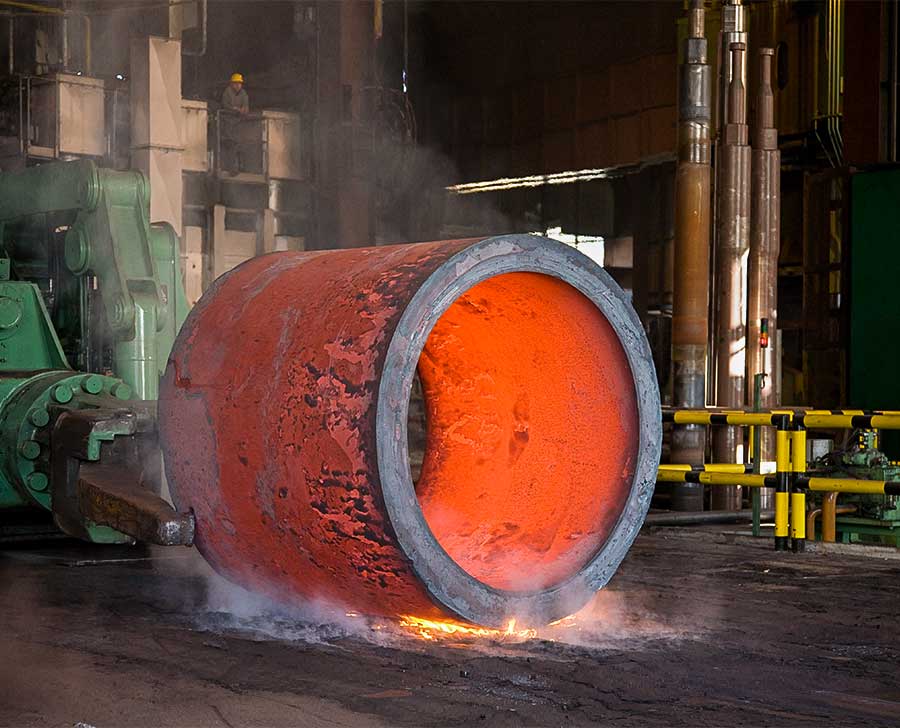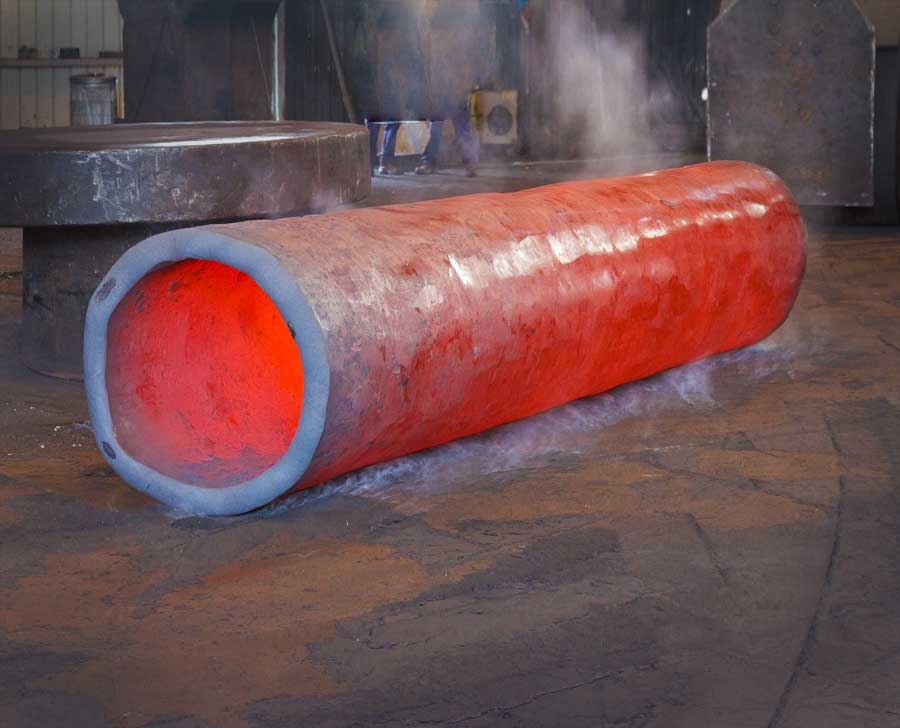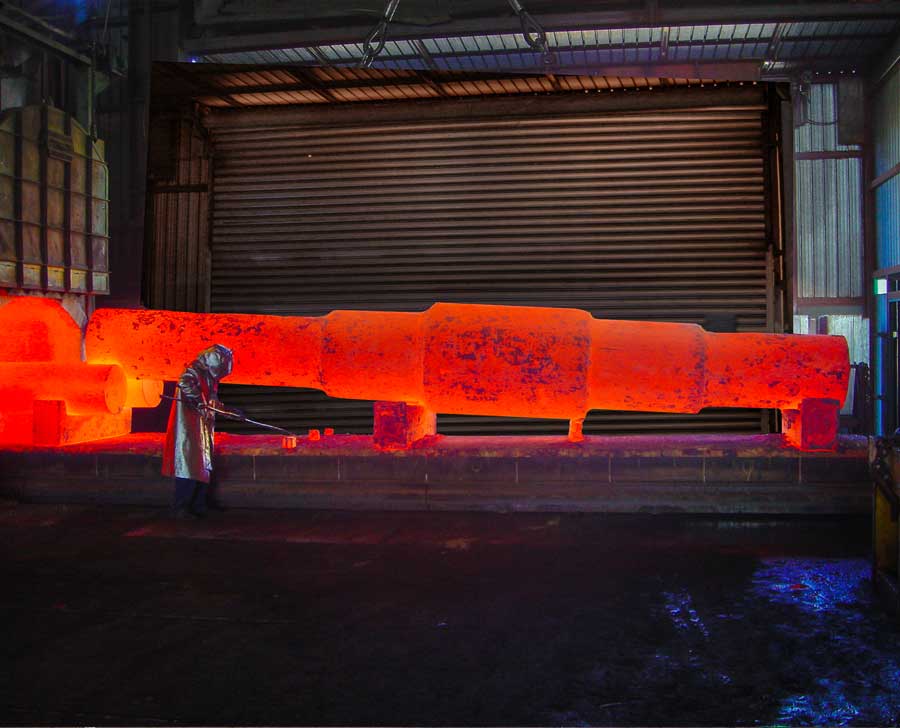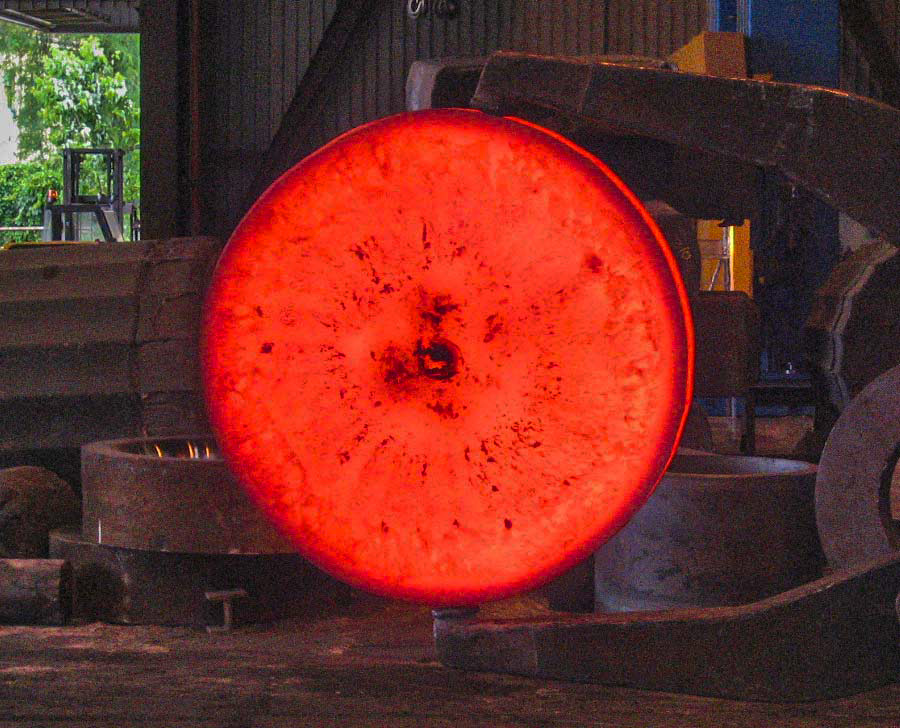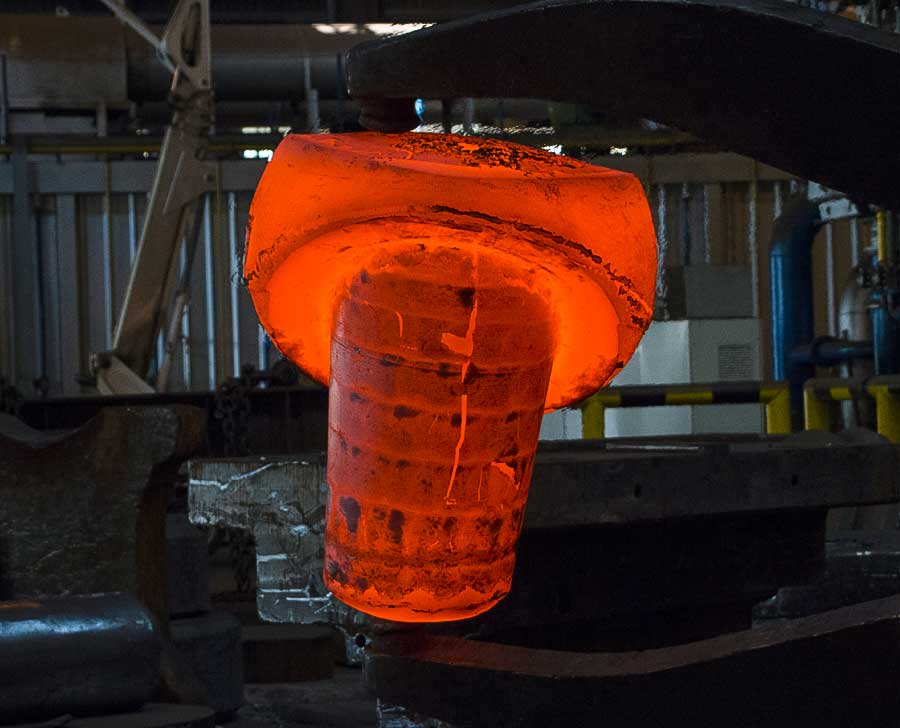What does Forging mean?
The forging process consists in a high-temperature plastic deformation of steel by means of hammers, presses or rolling mills of a base material which has limited mechanical properties and a coarse shape, in order to obtain a product with a shape which is more adherent to the finished dimensions of use and with higher mechanical and metallurgical characteristics.
During the forging operations the metal structure is modified; this deformation causes an improvement in the mechanical properties of the material such as yield, resilience and wear resistance and furthermore, thanks to the shaping, any internal defects that may be present in the starting material are eliminated.
The standard production cycle begins with an ingot produced by a steel mill (round, square or polygonal) if necessary, it goes through a pre-forging phase which changes its shape into a bloom, otherwise it is taken over by the cutting department.
In some cases the ingot can be placed directly into the heating furnace in order to be used entirely and be shaped into a forged shaft whose excess ends will be cut off later in the process.
The raw material is then brought to a high temperature, to the point that the metal becomes malleable and the presses, applying a strong pressure, gradually change its shape. In the case of rings, once a perforated disc has been obtained, it is placed in the rolling mill which, by rotating it between the rollers, enlarges the ring in order to reach the necessary diameter.
After the forging process, the parts go through to the heat treatment department where, thanks to dedicated furnaces and tanks, specific heating and cooling cycles are performed, this will affect the mechanical and metallurgical properties of the forged parts (for example: quenching, tempering, normalizing, solution annealing…)
The type of heat treatment depends on both the type of steel used and the characteristics required by the customer’s technical specifications based on the final application of the pieces.
Once these properties have been achieved, the forgings are brought to the machining shop, usually the rough machining phase is carried out internally in FMA, otherwise when customers need to collect a finished piece this process is entrusted to external suppliers. Sometimes other intermediate heat treatments are carried out, such as stress relieving for big shafts at the end of the machining process.
At the end of the production cycle, all the quality inspections requested by the customer are carried out which, together with the intermediate tests performed after forging or after heat treatment, ensure that the customer is delivered a product that complies with their needs.
A complete production cycle of a forged part can take from a minimum of 3 weeks up to 15 or more weeks.
The lead time depends on the procurement of raw material (if not on stock), on the steps necessary to obtain the shape of the forged part, but above all on the heat treatment cycles to be performed and on the amount of material to be removed during machining.



